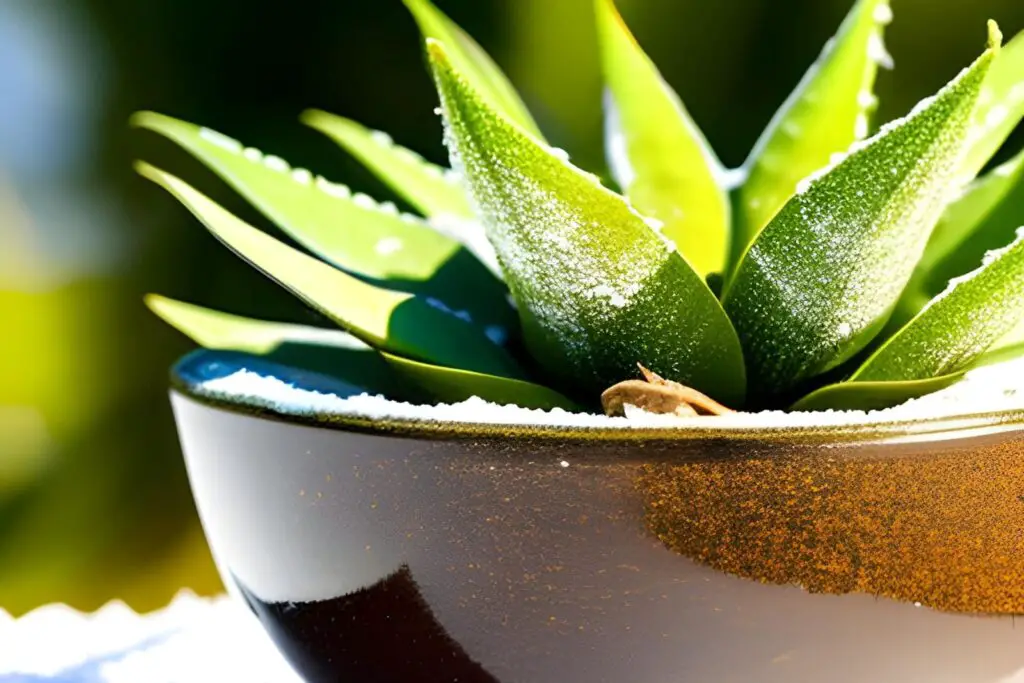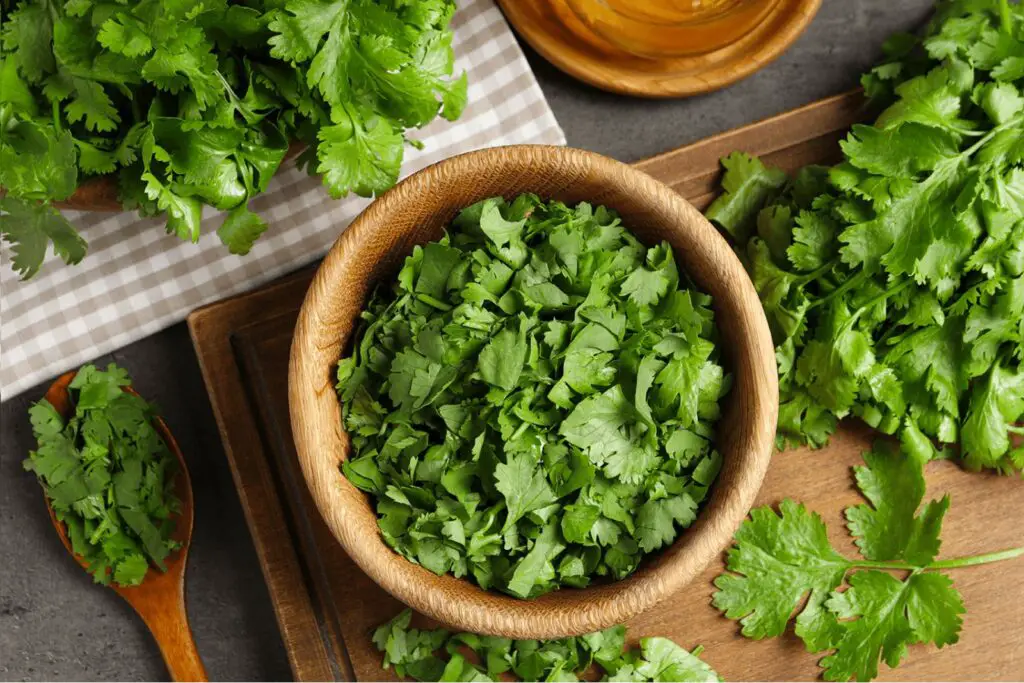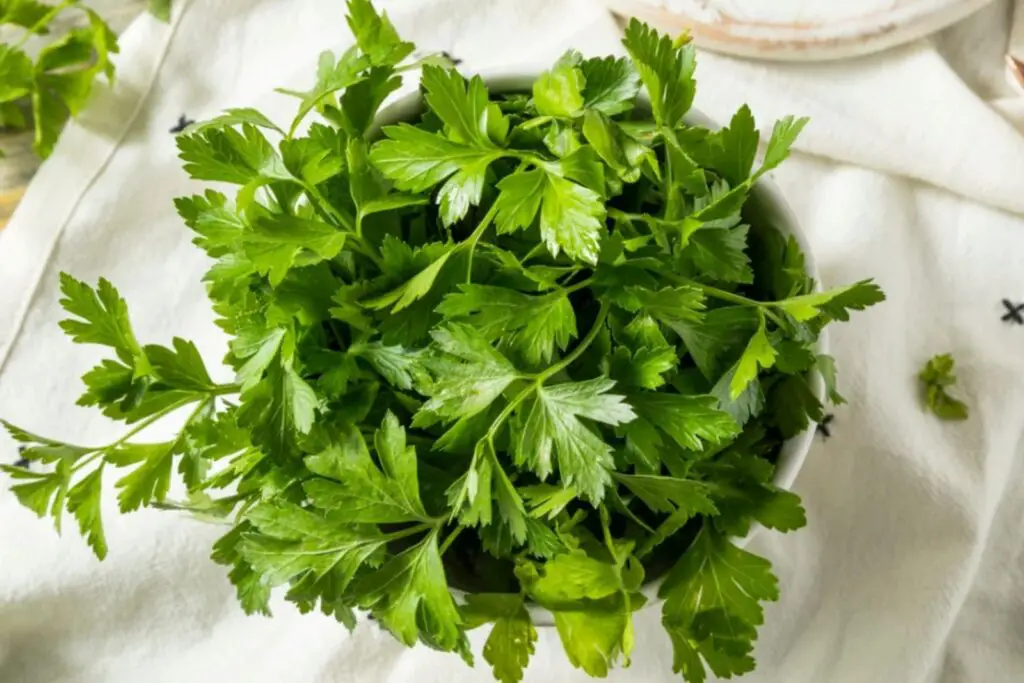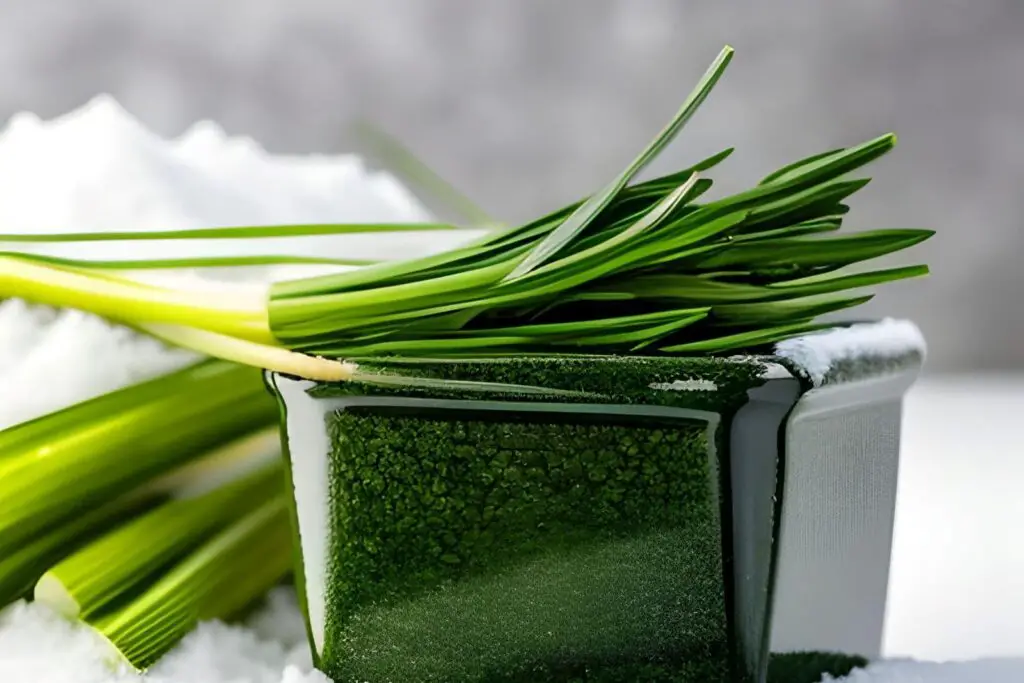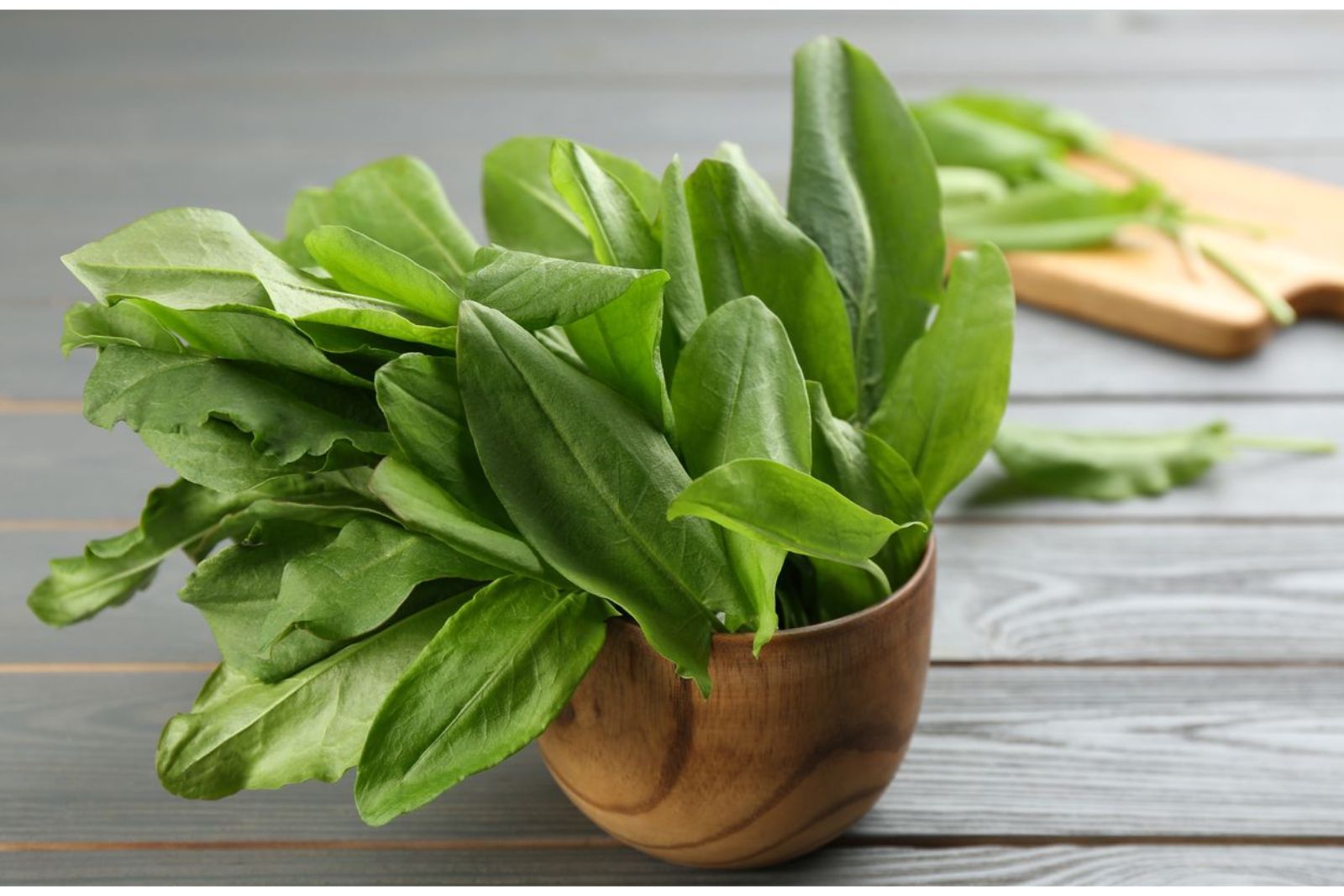
Sorrel leaves are a delightful herb known for their tangy, lemony flavor that adds a unique twist to various dishes. Whether used in salads, soups, or sauces, sorrel leaves are a popular choice among cooks and food enthusiasts. To ensure you can enjoy their fresh taste even during off-seasons, freezing sorrel leaves is a practical and simple solution. By following a few easy steps, you can preserve the vibrant green color and distinct taste of sorrel leaves. This article presents a comprehensive guide on freezing sorrel leaves to maintain their optimal quality for future culinary adventures.
Here’s a step-by-step guide on how to freeze sorrel leaves:
Step 1: Select fresh sorrel leaves
Selecting fresh sorrel leaves is the first and essential step in the process of freezing sorrel. The quality of the leaves you choose will directly impact the final taste and appearance of the frozen sorrel. Here’s why it’s important to pick fresh sorrel leaves:
- Flavor and Aroma: Fresh sorrel leaves have a delightful lemony flavor and a tangy aroma that makes them a favorite ingredient in various dishes. Choosing vibrant and fresh leaves ensures that you’ll preserve this unique taste during the freezing process.
- Texture: Fresh sorrel leaves have a crisp and tender texture that adds a pleasant mouthfeel to your culinary creations. Avoid leaves that are wilted or discolored, as they might not freeze well and could affect the overall texture of the frozen sorrel.
- Nutritional Value: Like many leafy greens, sorrel leaves are packed with essential nutrients, including vitamins A and C, iron, and antioxidants. By opting for fresh leaves, you maximize the nutritional benefits you’ll enjoy when using the frozen sorrel later on.
- Longer Shelf Life: When you freeze fresh sorrel leaves at their peak, you extend their shelf life significantly. Properly frozen sorrel can last up to six months in the freezer, allowing you to use this flavorful herb even when it’s out of season.
- No Additives or Preservatives: By freezing fresh sorrel leaves, you can avoid using any additives or preservatives commonly found in store-bought frozen vegetables. This ensures a more natural and healthier ingredient for your meals.
Whether you have your own sorrel plant in the garden or you buy them from a reputable source, inspect the leaves carefully before proceeding with the freezing process. Look for vibrant green leaves without any signs of wilting, yellowing, or damage. Avoid sorrel that appears slimy or has visible blemishes, as these signs indicate that the leaves are past their prime.
Step 2: Wash and dry the leaves
Washing and drying the sorrel leaves is a crucial step in preparing them for freezing. This process ensures that the leaves are clean, free from any contaminants, and ready to be blanched and frozen. Here’s why it’s important to wash and dry the sorrel leaves properly:
- Removing Dirt and Debris: Sorrel leaves, like any fresh produce, may have traces of dirt, dust, or other debris on their surface. Washing the leaves under cool, running water helps to dislodge and wash away any unwanted particles, ensuring that the leaves are clean and safe to consume.
- Sanitizing the Leaves: Washing the sorrel leaves helps in sanitizing them, reducing the risk of potential bacterial contamination. This is especially important if you’ve harvested the leaves from your garden, where they might come into contact with soil and other outdoor elements.
- Preserving Flavor and Aroma: Thoroughly rinsing the sorrel leaves ensures that no residual dirt or impurities interfere with their natural flavor and aroma. By starting with clean leaves, you can fully enjoy the tangy and lemony taste that makes sorrel so unique.
- Enhancing Freezing Efficiency: Excess moisture on the leaves can lead to ice crystals forming during freezing, potentially affecting the texture and quality of the frozen sorrel. By patting the leaves dry after washing, you reduce the amount of moisture present, improving the efficiency of the freezing process.
- Preventing Freezer Burn: Moisture on the sorrel leaves can contribute to freezer burn, which can negatively impact the taste and appearance of the frozen leaves over time. Drying the leaves before freezing minimizes the risk of freezer burn and helps maintain the overall quality of the frozen sorrel.
To wash the sorrel leaves, hold them under cool, running water, and gently rub each leaf with your fingers to remove any dirt or debris. It’s essential to be gentle to avoid damaging the delicate leaves. If the leaves are particularly dirty, you can fill a bowl with water and submerge the leaves, swishing them around to dislodge any stubborn particles.
After washing, it’s crucial to pat the sorrel leaves dry thoroughly. Use paper towels or a clean kitchen cloth to gently absorb the excess moisture from the leaves. Avoid squeezing or pressing too hard, as this can bruise the leaves. Dry sorrel leaves will freeze more efficiently and maintain their quality during storage.
Step 3: Blanch the sorrel leaves
Blanching is a vital step in the process of freezing sorrel leaves, and it plays a significant role in maintaining the overall quality of the herb during storage. This blanching technique involves briefly immersing the sorrel leaves in boiling water and then quickly cooling them down in an ice water bath. Here’s why blanching is crucial and how it helps preserve the color, flavor, and texture of sorrel leaves:
- Preserving Color: Sorrel leaves have a beautiful vibrant green color, which is one of their most attractive features. When blanched, enzymes that cause the leaves to lose their color are neutralized. This helps retain the fresh, green hue of the sorrel leaves even after freezing, ensuring they remain visually appealing in your dishes.
- Retaining Flavor: Blanching helps to lock in the natural flavors of the sorrel leaves. By subjecting the leaves to high heat for a brief period, blanching helps to halt the enzymatic processes that can cause flavor deterioration over time. As a result, the frozen sorrel leaves retain their distinct tangy and lemony taste.
- Preserving Texture: Blanching also helps to partially cook the sorrel leaves, which is beneficial for preserving their texture. The brief exposure to hot water softens the leaves slightly, making them more pliable and less likely to become tough and fibrous during freezing. This ensures that the frozen leaves remain tender and easy to work with in your recipes.
- Eliminating Microorganisms: Blanching serves as an additional measure to reduce the presence of harmful microorganisms on the surface of the sorrel leaves. Although washing the leaves helps, blanching provides an extra level of safety by subjecting the leaves to high temperatures, which can help eliminate potential pathogens.
The blanching process is relatively quick and simple. To blanch sorrel leaves, bring a pot of water to a rolling boil. Meanwhile, prepare a separate bowl filled with ice-cold water. Submerge the sorrel leaves in the boiling water for approximately 10 to 15 seconds – this short duration is sufficient to achieve the desired blanching effect without overcooking the leaves.
Immediately after blanching, transfer the sorrel leaves into the ice water bath. This rapid cooling process, known as “shocking,” halts the cooking process and helps maintain the leaves’ color, flavor, and texture. Once the leaves are completely cooled, remove them from the ice water bath and pat them dry before proceeding to the next steps of arranging and packaging for freezing.
Can I freeze sorrel without blanching it first?
Blanching sorrel before freezing is recommended to preserve its color, flavor, and texture. Blanching helps inactivating enzymes and ensuring better results during freezing, leading to a better quality frozen product.
Step 4: Drain and pat dry
Draining and patting dry the blanched sorrel leaves is a crucial step that follows the blanching process. After shocking the leaves in ice water, it’s essential to remove any excess moisture before freezing. Properly draining and drying the sorrel leaves offer several benefits:
- Preventing Ice Crystal Formation: Excess moisture on the sorrel leaves can lead to the formation of ice crystals when they are frozen. These ice crystals can cause freezer burn, affecting the texture and taste of the leaves over time. By patting the leaves dry, you reduce the moisture content, minimizing the risk of ice crystal formation during freezing.
- Avoiding Clumping: Wet sorrel leaves can stick together when frozen, forming clumps that are challenging to separate later on. By thoroughly patting the leaves dry, you help prevent them from sticking together, making it easier to use individual leaves when needed in your recipes.
- Improving Freezing Efficiency: Draining and drying the sorrel leaves before freezing ensures that they freeze more efficiently. Excess moisture can create a barrier around the leaves, making it harder for them to freeze quickly and evenly. Dry leaves freeze more effectively, preserving their quality and nutrients.
- Reducing Freezer Burn: Properly dried sorrel leaves are less likely to develop freezer burn, which occurs when moisture on the surface of the leaves evaporates and recondenses as ice. Freezer burn can lead to off-flavors and a decrease in quality. By removing excess moisture, you help maintain the optimal taste and appearance of the frozen sorrel.
To drain the sorrel leaves, simply remove them from the ice water bath and place them in a colander. Allow the excess water to drip off and let gravity help in the draining process. It’s essential not to press or squeeze the leaves, as this may cause bruising and damage to their delicate structure.
After draining, gently pat the sorrel leaves dry with a paper towel. Be gentle to avoid bruising the leaves and disrupting their texture. The goal is to remove the remaining surface moisture without causing any harm to the leaves.
Step 5: Arrange and flash-freeze the leaves
After washing and drying the sorrel leaves, it’s time to arrange and flash-freeze them for long-term storage. Properly arranging the leaves and using the flash-freezing method is essential to maintain the quality and flavor of the frozen sorrel leaves. Here’s why this step is crucial:
- Preventing Clumping: Arranging the sorrel leaves in a single layer on a baking sheet or tray ensures that they have enough space between each other. This prevents the leaves from sticking together or forming clumps during freezing. If the leaves are too close or touching, they may freeze together, making it challenging to separate them when you need to use them in your recipes.
- Maintaining Freshness: Flash-freezing is a rapid freezing process that helps preserve the freshness of the sorrel leaves. When food freezes quickly, ice crystals form in smaller sizes, reducing the damage to the cell structure of the leaves. This results in better-tasting and better-looking frozen sorrel leaves.
- Preserving Color and Texture: Flash-freezing helps maintain the vibrant green color and tender texture of the sorrel leaves. The quick freezing process locks in the natural color and nutrients, ensuring that the leaves retain their appealing appearance and quality when thawed.
- Easy Portioning: Flash-frozen sorrel leaves remain individual and separate during freezing. This allows you to take out only the amount you need for your recipes without having to thaw the entire batch. It provides convenience and reduces potential waste.
To arrange the sorrel leaves for flash-freezing, lay them in a single layer on a baking sheet or tray. Ensure that the leaves are not touching each other and have enough space around them. If you have a large batch of sorrel leaves to freeze, you can use multiple baking sheets or trays to create additional layers of leaves, ensuring they all freeze quickly and individually.
Once the sorrel leaves are arranged, place the baking sheet or tray in the freezer. The flash-freezing process should take about 1 to 2 hours, depending on the thickness of the leaves and the efficiency of your freezer. Once the leaves are fully frozen, they can be transferred to airtight freezer bags or containers for long-term storage.
Step 6: Package and seal the sorrel leaves
Packaging and sealing the frozen sorrel leaves properly is a critical step to ensure their long-term preservation and to maintain their quality. This step involves transferring the flash-frozen sorrel leaves into airtight containers or freezer bags and removing as much air as possible before sealing. Alternatively, you can wrap the leaves tightly in plastic wrap. Here’s why this step is essential:
- Preventing Freezer Burn: Freezer burn occurs when air comes into contact with the frozen food, causing the moisture on its surface to evaporate and form ice crystals. Properly sealing the sorrel leaves in airtight containers or bags helps create a barrier that prevents air from reaching the leaves, minimizing the risk of freezer burn.
- Maintaining Flavor and Texture: Airtight packaging helps lock in the flavors and textures of the frozen sorrel leaves. It prevents the leaves from absorbing unwanted odors or flavors from other foods in the freezer, ensuring that they retain their fresh, tangy taste and tender texture.
- Organized Storage: Using airtight containers or bags allows for organized storage of the frozen sorrel leaves. Labeling the containers with the contents and date of freezing makes it easy to identify and access the sorrel leaves when needed, reducing waste and helping you keep track of their storage time.
- Space Efficiency: Airtight packaging minimizes the amount of space the frozen sorrel leaves occupy in the freezer. By removing excess air from the bags or containers, you can create a more compact and organized storage solution.
When packaging the sorrel leaves, consider the following methods:
- Airtight Freezer Bags: Place the flash-frozen sorrel leaves into resealable freezer bags, removing as much air as possible before sealing. The best way to do this is by using a straw to suck out the air from the bag before quickly sealing it shut.
- Airtight Containers: If using containers, fill them with the sorrel leaves, leaving a bit of space at the top to accommodate expansion during freezing. Press down gently to remove any trapped air before sealing the containers tightly.
- Plastic Wrap: Alternatively, you can wrap individual portions of the sorrel leaves tightly in plastic wrap. This method is useful if you plan to use the sorrel leaves in small quantities at a time.
Whichever method you choose, make sure the packaging is airtight to prevent moisture loss and maintain the overall quality of the frozen sorrel leaves. Properly sealed sorrel leaves can remain fresh and flavorful for up to six months in the freezer, allowing you to enjoy this delightful herb in your dishes year-round.
Step 7: Label and date the packages
Labeling and dating the packages of frozen sorrel leaves is a crucial organizational step that helps you keep track of the contents and storage time. Here’s why this step is important:
- Avoiding Confusion: Labeling the packages ensures that you can quickly identify the sorrel leaves in your freezer. Without proper labeling, it can be challenging to distinguish between different frozen items, especially if they look similar once frozen. Clear labeling eliminates confusion and saves you time when searching for specific ingredients.
- Tracking Storage Time: Sorrel leaves, like any frozen food, have a limited shelf life. By dating the packages, you can easily monitor how long the leaves have been in the freezer. This information helps you prioritize which packages to use first, ensuring that you consume the oldest ones before they begin to lose their quality.
- Preventing Waste: Knowing the date of freezing allows you to make informed decisions about the freshness and usability of the sorrel leaves. If too much time has passed since freezing, you might choose to use up the leaves more quickly or make sure to incorporate them into recipes that mask any potential decrease in quality.
- Maintaining Quality: Frozen food, including sorrel leaves, is best consumed within a specific time frame to ensure optimal taste and texture. By dating the packages, you can adhere to recommended storage times and enjoy the best quality from the frozen sorrel.
When labeling the packages, include essential information, such as “Sorrel Leaves” or “Frozen Sorrel,” so that you can quickly identify the contents. Additionally, write the date of freezing on the label using a permanent marker or labels designed for freezer use. Make sure the label is clear and easy to read.
If you have different portions or batches of sorrel leaves, consider using individual labels for each package to avoid confusion. For example, if you have sorrel leaves blanched on different dates or in varying quantities, label each package accordingly.
Lastly, store the labeled packages in an organized manner in the freezer, grouping similar items together. This helps you efficiently manage your frozen foods and makes it easy to locate the sorrel leaves whenever you want to use them in your recipes.
Step 8: Store in the freezer
Storing the sealed sorrel leaf packages properly in the freezer is the final step in the freezing process. How you position and store the packages can significantly impact the quality and longevity of the frozen sorrel leaves. Here’s why this step is crucial:
- Preventing Freezer Burn: Freezer burn occurs when moisture on the surface of frozen food evaporates and recondenses as ice, leading to dehydration and texture changes. Proper storage away from the freezer’s fan helps minimize air circulation around the sorrel leaf packages, reducing the risk of freezer burn. The fan can accelerate moisture evaporation and worsen freezer burn, so positioning the packages away from it is essential.
- Maintaining Quality: By storing the sealed sorrel leaf packages correctly, you preserve the taste, color, and texture of the frozen leaves. Well-preserved sorrel leaves can retain their vibrant green color and tangy flavor, making them a delightful addition to your dishes even after months of storage.
- Avoiding Contamination: Proper storage ensures that the frozen sorrel leaves remain protected from potential contaminants or odors from other items in the freezer. Airtight packaging and careful positioning away from the fan help maintain the purity of the sorrel leaves’ taste and aroma.
- Extended Shelf Life: Frozen sorrel leaves can remain in good quality for up to six months if stored correctly. However, after this period, the quality may start to degrade, and the leaves may lose some of their desirable attributes. By adhering to proper storage practices, you can maximize the shelf life and make the most of your frozen sorrel leaves.
When placing the sealed sorrel leaf packages in the freezer, ensure that they are organized and arranged in a way that allows for efficient use. Group similar items together, and make sure to leave enough space between packages for proper air circulation.
Avoid over-packing the freezer, as overcrowding can hinder air circulation and affect the overall freezing process. Additionally, make sure the freezer temperature is consistently maintained at 0°F (-18°C) or below to ensure optimal food safety and quality.
Before using the frozen sorrel leaves in your recipes, remember to defrost only the portion you need. To thaw, remove the required amount of sorrel leaves from the freezer and let them thaw in the refrigerator or use them directly in your cooking process. Avoid refreezing thawed sorrel leaves, as this can affect their texture and quality.
Can I use frozen sorrel leaves directly in recipes, or do I need to thaw them first?
Frozen sorrel leaves can be used directly in recipes without thawing. The tender texture of the leaves makes them easy to incorporate into dishes such as soups, stews, sauces, and omelets without the need for thawing.
Other related questions
Can I refreeze sorrel?
Refreezing sorrel is not recommended as it can negatively impact its quality and safety. Once sorrel has been thawed, it may undergo changes in texture and flavor, potentially leading to a loss in overall quality. It is best to use sorrel leaves in their thawed state and avoid refreezing to preserve their taste and appearance.
How do I know if the sorrel has gone bad after being frozen?
To determine if frozen sorrel has gone bad, check for any signs of freezer burn, such as dry, discolored patches or an off-odor. If the leaves appear mushy, slimy, or have a foul smell, they may have spoiled. Sorrel that has been stored for an extended period beyond its recommended shelf life may also lose its vibrant green color and fresh flavor, indicating a decrease in quality.
Is it better to freeze whole sorrel leaves or chop them before freezing?
Both whole and chopped sorrel leaves can be frozen successfully. However, freezing whole leaves may help retain their shape better, while chopping them can be convenient for portioning and quick usage in recipes.
Can I freeze sorrel in ice cube trays for easy portioning?
Yes, freezing sorrel in ice cube trays can be a convenient way to portion and use smaller quantities in recipes. Simply chop the sorrel leaves, fill each ice cube compartment with the chopped leaves, and cover them with water or vegetable broth before freezing.
Can I freeze cooked sorrel dishes like soup or pesto?
Yes, you can freeze cooked sorrel dishes like soups, stews, or pesto. Allow the dishes to cool completely before transferring them into airtight containers or freezer bags for freezing. Remember to label and date the packages for easy identification.
Can I freeze sorrel stems along with the leaves?
While sorrel stems are edible and flavorful, they may have a different texture compared to the leaves. It is best to freeze the leaves separately from the stems. Consider using the stems in other recipes or storing them separately if desired.
What are some creative ways to use frozen sorrel leaves in recipes?
Frozen sorrel leaves are versatile and can be used in various dishes. They can be added to soups, sauces, salads, omelets, and stir-fries for a tangy twist. Additionally, use them to garnish seafood, poultry, or grilled dishes for a burst of fresh flavor.
Can I freeze sorrel-flavored ice cubes for refreshing beverages?
Yes, you can freeze sorrel-infused water or sorrel-flavored syrup in ice cube trays to add a refreshing touch to beverages. Use these flavorful ice cubes to enhance lemonades, cocktails, or even iced tea for a unique and invigorating taste.

